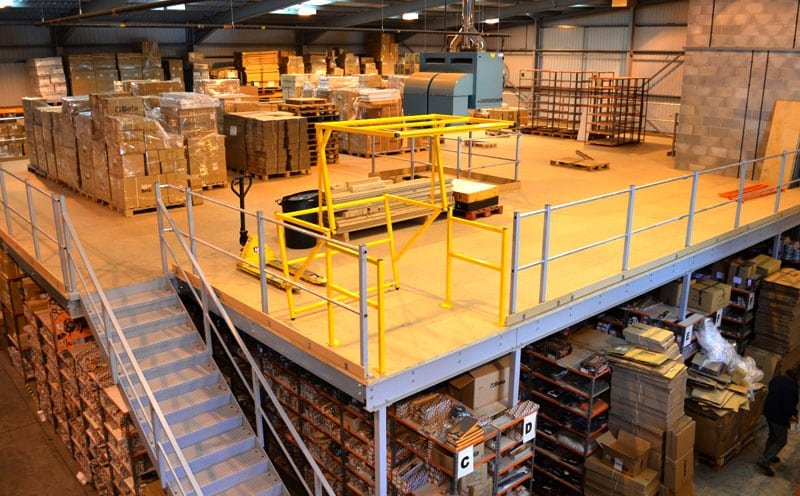When managing a warehouse, choosing the right racking system is crucial for optimizing space, improving efficiency, and maintaining safety. Different types of racking systems are designed to meet various storage needs, making it important to understand their features and best uses. This blog explores the most common types of racking system for warehouse, helping you decide which is best suited for your warehouse requirements.
Introduction to Warehouse Racking Systems
Importance of Selecting the Right Racking System
A well-chosen racking system maximizes storage space, streamlines operations, and enhances safety in the warehouse. The right system allows for easy access to items, efficient inventory management, and better use of vertical space. Selecting an inappropriate system, however, can lead to wasted space, inefficiency, and increased costs.
Overview of Common Racking Types
Several racking systems are available, each designed for specific warehouse operations and inventory types. Understanding the characteristics of each system can help you make an informed decision tailored to your operational needs.
Selective Pallet Racking: Versatility and Accessibility
Features and Benefits
Selective pallet racking is the most common racking system found in warehouses due to its versatility and easy access to each pallet. This system consists of upright frames and horizontal beams that form bays. Each bay can typically store one pallet deep, providing direct access to every pallet without needing to move others.
Best Uses
Selective racking is ideal for warehouses with a wide variety of products and a high turnover rate. It’s especially suitable for businesses that require immediate access to all their goods without a large volume of identical items in storage.
Drive-In and Drive-Through Racking: Maximizing Space
Features and Benefits
Drive-in and drive-through racking systems allow pallets to be stored deeply on rails running through the racking. Drive-in systems have one entry and exit point, meaning pallets are stored and retrieved from the same side, using a last-in, first-out (LIFO) method. Drive-through systems have entry points on both ends of the racking, supporting a first-in, first-out (FIFO) inventory rotation.
Best Uses
These systems are perfect for storing large quantities of homogeneous products. They maximize space by reducing the number of aisles needed. Drive-in racking is well-suited for seasonal goods that don’t require immediate access, whereas drive-through systems are ideal for perishable items that need quicker retrieval.
Push-Back Racking: Efficient Inventory Rotation
Features and Benefits
Push-back racking allows pallets to be stored two to five pallets deep on either side of an aisle, making it more dense than selective racking. Each pallet is placed on a wheeled cart that slides on rails, pushing the previous pallet back when a new one is added. This setup provides a LIFO storage method but offers better selectivity compared to drive-in systems.
Best Uses
Push-back racking is suitable for businesses with multiple pallets of the same items and for items that do not require FIFO rotation. It offers a combination of high-density storage and better access to different stock keeping units (SKUs).
Cantilever Racking: Storing Long, Bulky Items
Features and Benefits
Cantilever racking is designed with arms extending from the racking column, providing no front obstructions, thereby accommodating long, bulky items such as lumber, pipes, or furniture. This system can be built to various heights and lengths, with adjustable arms to meet specific storage needs.
Best Uses
Cantilever racking is ideal for warehouses that store long, irregular, or oversized goods. Its open design allows for easy loading and unloading with forklifts or other lifting equipment.
Pallet Flow Racking: High Density and Automatic Rotation
Features and Benefits
Pallet flow racking uses gravity roller conveyor systems built into the racks. Pallets are loaded from the back and move towards the front of the rack on rollers, allowing for automatic FIFO stock rotation. This system is highly efficient for high-volume storage and quick product turnover.
Best Uses
Pallet flow systems are ideal for high-throughput warehouses with perishable goods or products that require strict rotation policies. It’s particularly effective in food distribution or cold storage operations.
Mobile Racking: Maximizing Space Utilization

Features and Benefits
Mobile racking systems consist of conventional pallet racks mounted on motor-driven carriages that move along rails embedded in the floor. By eliminating multiple aisles and opening one as needed, they significantly increase storage density.
Best Uses
Mobile racking is suitable for warehouses with limited space that need to store as much inventory as possible in their available area. This system is ideal for frozen or cold storage where space is expensive to cool and thus needs to be efficiently utilized.
Conclusion
Choosing the right type of racking system for your warehouse depends on several factors including the type of goods you store, the frequency of access required, space availability, and your specific operational needs. Each racking system offers unique benefits and is suited to different types of warehouse operations. By understanding the features and best uses of each racking type, you can optimize your storage space, streamline your operations, and maintain a safe and efficient warehouse environment.
Selecting the appropriate racking system will not only ensure efficient storage but also improve overall operations, allowing for quicker access to goods, better inventory management, and ultimately, higher customer satisfaction. Remember, a well-organized warehouse is a more productive one, so take the time to evaluate your needs and choose a racking system that aligns with your business goals.
Note:- To read more articles visit on repurtech.
